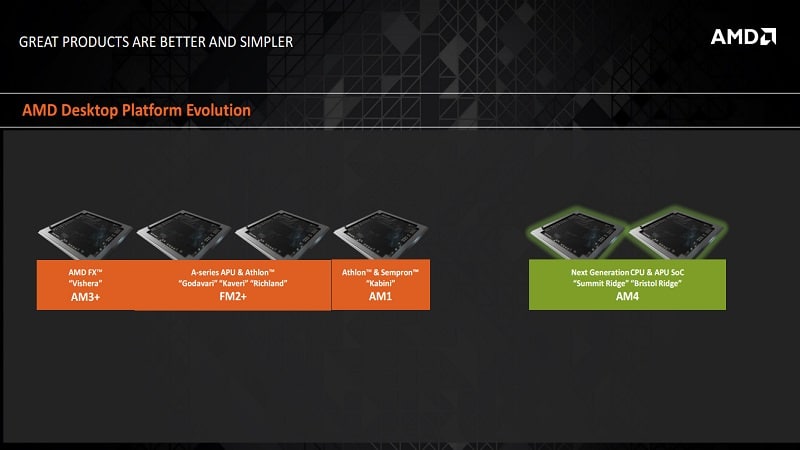AMD Unifies Desktop Zen CPU and APU Sockets
Samuel Wan / 9 years ago

In the days before AMD launched their APUs, all of their consumer CPUs largely used the socket across their lineup. When AMD launched their Llano series of APUs in 2011, they used the an incompatible FM1 socket instead of the AM3/3+ due to the need to integrate the iGPU. With the subsequent Trinity and Richland APUs, AMD kept a different socket in FM2. This year AMD is finally moving to a unified socket.
Officially confirmed as AM4, this new socket will combine the CPU and APU lineups for AMD. This means users will no longer have to decide which platform as well as chip they want, simplifying the decision to between a CPU or APU. This means users can purchase an APU on a budget and upgrade to a dedicated CPU and GPU later on without having to buy a new motherboard. This should help drive sales of AMD chips since it simplifies choice and offers more flexibility.
In bringing the two platforms together, we can finally expect to see Zen CPUs become a SoC. This is because the APU lineup already has the PCIe lanes tied to the CPU directly which bring along power savings and better performance, something the CPU lineup will finally pick up. Zen is expected to bring DDR4 support along as well. The biggest questions will be AMD have another socket meant for higher end chips like Intel does, whether or not the Zen CPUs will have some form of on-die graphics like Intel does and if AM4 will still be PGA.



















